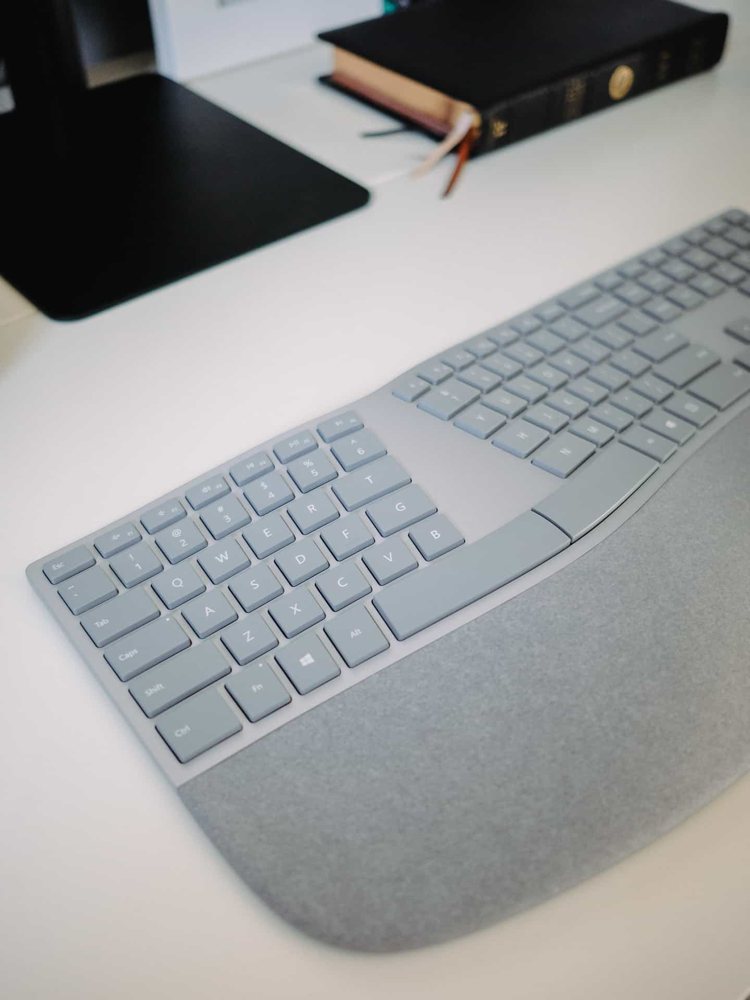
- #Microsoft ergonomic keyboard review full
- #Microsoft ergonomic keyboard review software
- #Microsoft ergonomic keyboard review Bluetooth
AKA, among the largest tenkeyless keyboards on the market. This makes it supportive but incredibly bulky, measuring 1.5″ by 8.5″ by 15.5″. The Microsoft Sculpt incorporates the dome-shaped layout typical of ergonomic keyboards.

Nothing fancy, but a nice touch, nonetheless.
#Microsoft ergonomic keyboard review software
The software lets you bind macros to the top function and media keys for easy access to essential controls. If you’d like to take your keyboarding up a notch, you can customize the keyboard with Microsoft’s Mouse and Keyboard Center 11. Even though I only type around 75 WPM, I’ve seen many users report that the Sculpt registers keystrokes at warp speed, up to 100+ WPM. The keys respond well to every press, with every stroke actuating as expected. This design quirk aside, it’s business as usual once you’ve connected to your Windows, macOS, or Linux machine. Then, the user could decide what’s best in any given situation. I understand and enjoy the secure connection as much as the next user, but I wish the Sculpt came with an option for Bluetooth, as well. When the keyboard or receiver dies or gets lost, the other dies with it - no replacements. Unfortunately, the encrypted relationship plays out like Romeo and Juliet. As a bonus, Microsoft pairs the keyboard and its receiver at the factory, offering 128-bit AES encryption that keeps your keystrokes safe on public networks. The Sculpt connects to your computer via a 2.4 GHz USB wireless receiver. Meanwhile, the supportive foam-like wrist rest is surprisingly cushy, offering a place to rest your hands between typing sessions. The 10° tenting angle and downward-sloping attachment ensure proper posture. But you do sacrifice precision ergonomics, as you can’t adjust the two sides to fit your typing style.įortunately, it’s still plenty supportive for most users. The benefit is that there’s no unsightly cord connecting the two pieces. Unlike SitWorkPlay’s favorite ergonomic keyboard - the Kinesis Freestyle Edge RGB - Microsoft’s Sculpt features a fixed frame that doesn’t split apart at the center seam. The scissor switch’s momentum and quiet clicks combine to induce a little shot of dopamine every time you press a key. Although not nearly as responsive as a mechanical keyboard, I’ve been pleasantly surprised by the Scult’s sensory stimulation.

The keys are also surprisingly tactile, providing a lovely spring that pushes back upon actuation.
#Microsoft ergonomic keyboard review full
Typing is plenty comfortable whether you’re using the full keyboard or the separate keypad, as Microsoft’s scissor membrane switches operate at an ideal ~60 grams of force. Since the Sculpt comes with a standalone keypad, you also retain the same number-crunching benefits of a full-size model. The advantage here is that you don’t have to extend your right hand to reach your mouse and return to touch typing position.

The company removed the traditional right-side number pad for a smaller, more compact frame. Microsoft went with a tenkeyless design on the Sculpt Ergonomic.
#Microsoft ergonomic keyboard review Bluetooth



 0 kommentar(er)
0 kommentar(er)
